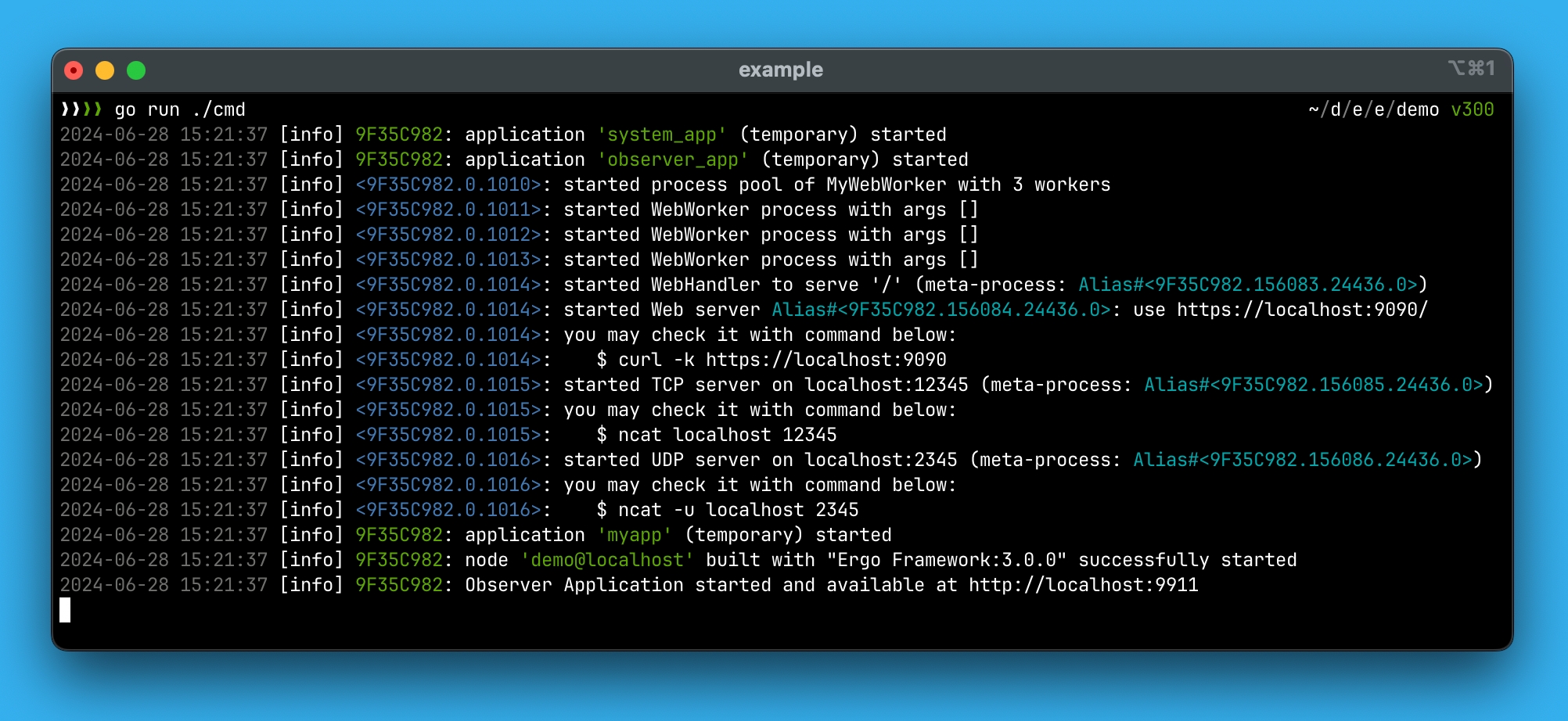Web
To handle synchronous HTTP requests with the actor model in Ergo Framework, they must be converted into asynchronous messages. For this purpose, two meta-processes have been created: meta.WebServer and meta.WebHandler. The first is used to start an HTTP server, and the second transforms synchronous HTTP requests into messages that are sent to a worker process. A worker process can be created using act.WebWorker, which processes the incoming messages asynchronously.
Creating and Spawning meta.WebHandler
You can create a meta.WebHandler using the meta.CreateWebHandler function. This function creates an object that implements the gen.MetaProcessBehavior and http.Handler interfaces.
It takes meta.WebHandlerOptions as an argument:
Process: The name of the process to which transformed asynchronousmeta.MessageWebRequestmessages are sent. If not specified, these messages are sent to the parent meta-process.RequestTimeout: The time allowed for the process to handle the message, with a default of 5 seconds.
After successful creation, you need to start the meta-process using SpawnMeta from the gen.Process interface.
Once the meta-process is running, it can be used as an HTTP request handler
func factory_MyWeb() gen.ProcessBehavior {
return &MyWeb{}
}
type MyWeb struct {
act.Actor
}
// Init invoked on a start this process.
func (w *MyWeb) Init(args ...any) error {
// create an HTTP request multiplexer
mux := http.NewServeMux()
// create a root handler meta-process
root := meta.CreateWebHandler(meta.WebHandlerOptions{
// use process based on act.WebWorker
// and spawned with registered name "mywebworker"
Worker: "mywebworker",
})
// spawn this meta-process
rootid, err := w.SpawnMeta(root, gen.MetaOptions{})
if err != nil {
w.Log().Error("unable to spawn WebHandler meta-process: %s", err)
return err
}
// add our meta-process as a handler of HTTP-requests to the mux
// since it implements http.Handler interface
mux.Handle("/", root)
// you can also use your middleware function:
// mux.Handle("/", middleware(root))
w.Log().Info("started WebHandler to serve '/' (meta-process: %s)", rootid)
// create and spawn web server meta-process
// with the mux we created to handle HTTP-requests
//
// see below...
...
return nil
}
Creating and Spawning meta.WebServer
To create the meta.WebServer meta-process, use the meta.CreateWebServer function with the meta.WebServerOptions argument. These options allow you to set:
Host: The interface on which the port will be opened for handling HTTP requests.Port: The port number.CertManager: Enables TLS encryption for the HTTP server. You can use the node'sCertManagerto activate the node's certificate by using theCertManager()method of thegen.Nodeinterface.Handler: Specifies the HTTP request handler.
When the meta-process is created, the HTTP server starts. If the server fails to start, meta.CreateWebServer returns an error. After successful creation, start the meta-process using SpawnMeta(...) from the gen.Process interface.
Example:
Example can be found in the repository at https://github.com/ergo-services/examples, specifically in the demo project.

Last updated
Was this helpful?